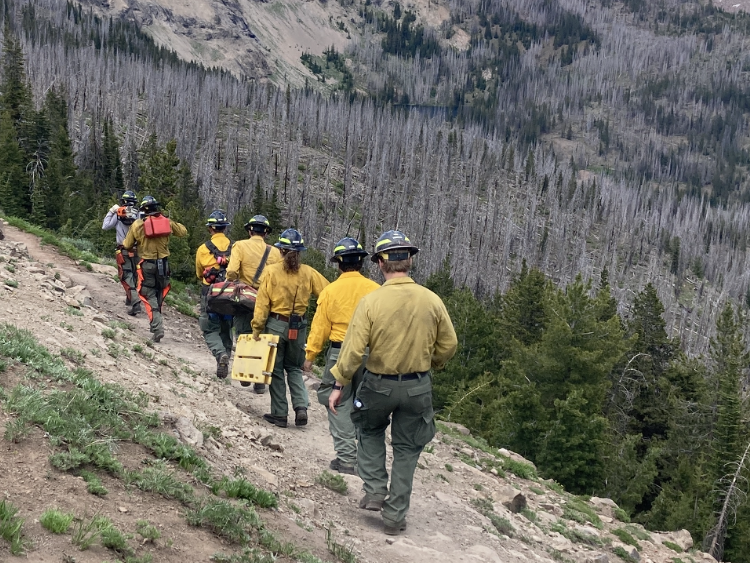Forests and carbon storage
Published 4:00 pm Thursday, February 19, 2009

- ALEX PAJUNAS - The Daily Astorian Beverly Law, professor of forest science at Oregon State University, describes the bandage-like wrappings on the Douglas fir trees that she uses to monitor the carbon intake of Coast Range forests at her research site near Corvallis earlier this year. The wrappings contain devices that measure the size of the tree and the rate of sap flow through the tree trunk. This data helps determine how much carbon a tree is taking up and giving off.
CORVALLIS – At a forest research site on the coast range, Beverly Law is studying the breathing patterns of a fast-growing Douglas fir stand.
A tower shooting up from the forest floor is rigged with highly calibrated sensors to measure the carbon dioxide concentration of the air 20 times per second.
The water vapor being released from the trees, the sap moving through their trunks, and the growth and decomposition of their roots below are all being carefully measured through automated devices that compile data in a computer nearby.
“This forest is wired,” said Law, stepping over a bundle of cords tethered to the ground.
A forest science professor at Oregon State University, Law is the director of the AmeriFlux Network, which is measuring the carbon intake and output of 90 forests across the continent.
Measuring precisely how much carbon forests can store over time will be key to determining their value in carbon offset markets as regional and international governments move forward with policies to combat global climate change.
The trees in Law’s Coast Range research site are around 40 years old – close to their maximum growth rate. But the surprising fact she’s finding through her analysis of 90 is that the trees won’t stop taking up and storing carbon once they’re past their peak production.
“When we figured out that older trees store more carbon, the question became how can you make more?” she said.
Giving carbon a cash value
Trees are on our side when it comes to mitigating climate change.
By taking up carbon dioxide and releasing water vapor, they naturally offset some of the greenhouse gas emissions from human activities and provide a much-needed carbon sink for the planet.
Through the Western Climate Initiative, Oregon is looking at launching a cap-and-trade system to regulate greenhouse gases; under the plan, forest management that increases carbon storage could have a cash value on a carbon offset market.
A forest carbon offset market would allow companies exceeding the regulatory cap on carbon dioxide emissions to buy an equivalent carbon offset from forestland owners based on increases in carbon sequestered in trees and wood products.
As the specifics get hashed out, Law’s research suggests that the best way to increase carbon storage in forests is to leave the trees alone.
Law’s studies show it can take anywhere from five to 20 years after a harvest for a forest to return to “carbon sink” status – absorbing more carbon than it releases.
And several studies have shown the amount of carbon actually sequestered in wood products is only 30 percent of the total storage capacity. The rest is lost through the logging and milling processes, or it ends up in a landfill.
“When you cut an old stand, you’re automatically saying you’re going to release about 70 percent of that carbon back into the atmosphere over the next number of years,” said Law.
Some conservation groups argue carbon offset credits should only be given to forestland owners for leaving forests intact, but timber companies and small woodlands owners would like to be eligible to sell credits for turning trees into wood products, converting woody debris into biofuels and for using wood to replace energy-intensive building materials like concrete and steel.
The Western Climate Initiative includes a group called the Carbon Forest Working Group, which is looking at all the possibilities and debating their virtues.
Greg Miller, public affairs manager for Weyerhaeuser Co., has been participating in the conversation and says he hopes the new market will include a spectrum of credits for a variety of carbon storage and emissions reduction efforts.
“We don’t have to exclude things,” he said. “You can have a permanent conservation easement and long rotations. That’s one way to get at it, but it’s not the only way.”
Making wood products doesn’t store as much carbon as leaving trees in the forest, he said, but the right system could reward both actions appropriately.
Let the trees grow?









